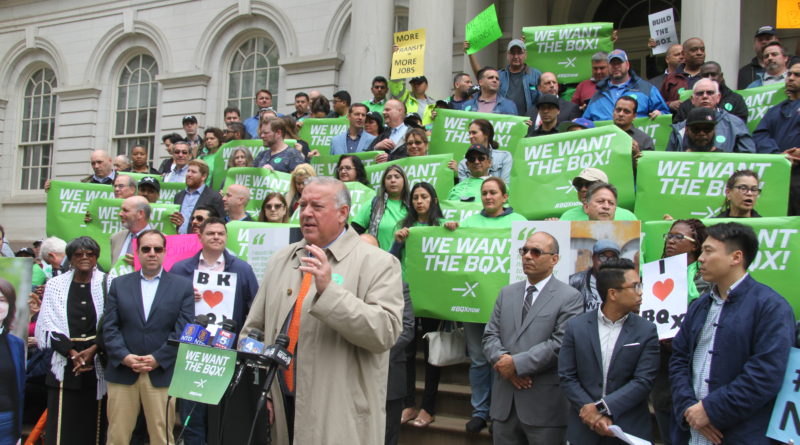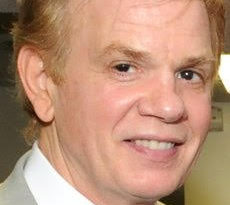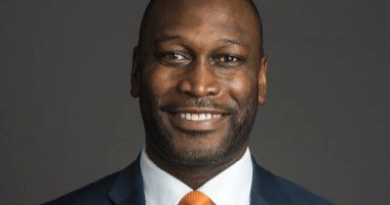BQX Streetcar Supporters Rally at City Hall
Council Members grill officials on project details
BY BENJAMIN FANG
Supporters of the proposed Brooklyn-Queens Connector (BQX) streetcar rallied on the steps of City Hall last week prior to a City Council hearing on the project.
A coalition of public housing leaders, unions and business organizations made its case for the light rail, which would run 11 miles from Red Hook to Astoria.
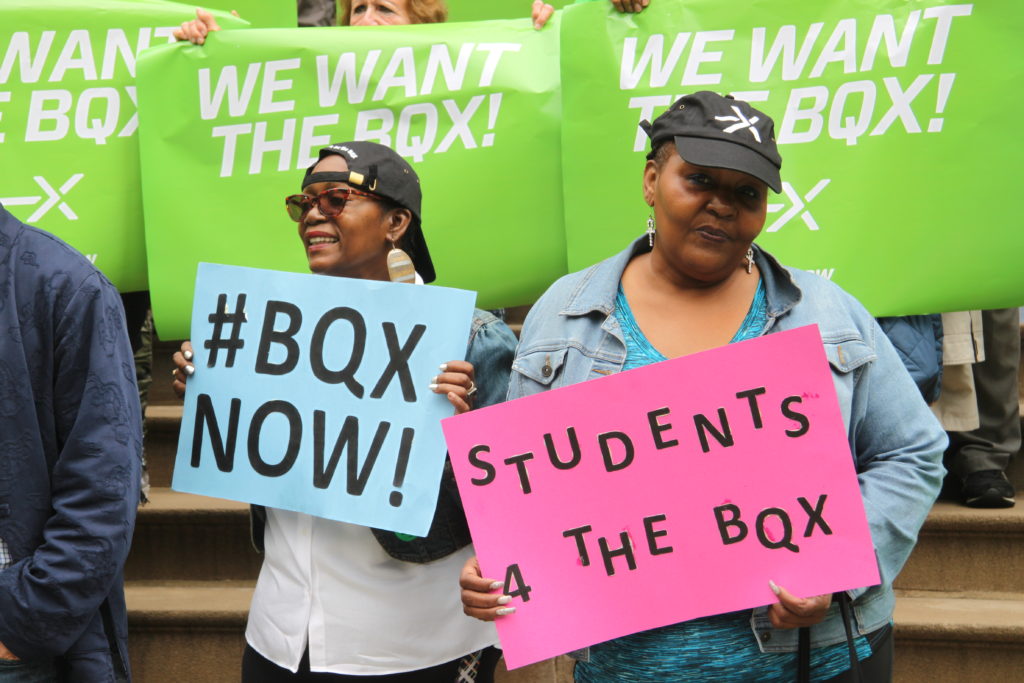
“It can connect our communities along this fast-growing corridor, and create a new spine of our city,” said Jessica Schumer, executive director of the Friends of the BQX. “It will create jobs, opportunities and equitable transit.”
The project is currently in the midst of a two-year environmental impact review, with the goal of going into the land use process, Schumer said.
It’s expected to enter a formal public review in April 2020, finish final design by 2024 and be operational by 2029.
“This is a big project, no one is saying this would be easy,” she said. “But it’s an important enough project that it does take a hard fight.”
Schumer noted that 300,000 people work near the Brooklyn-Queens waterfront, while 400,000 people live along the proposed corridor. The BQX is expected to serve 50,000 riders a day, she said.
It’s also expected to have a dedicated right of way, which means it won’t be impeded by cars, and won’t be disrupted by utility work or construction.
“We’re seeing other cities use this mode for a reason,” Schumer said. “It gets people around in a more efficient way and faster than a bus.
“It costs a lot less than constructing a subway,” she added. “It’s a good middle ground.”
Thomas Grech, president and CEO of the Queens Chamber of Commerce, said going back to the turn of the century, goods and services went east to west, from Queens and Long Island into Manhattan.
But with the growth of Queens and Brooklyn as residential and commercial centers, there needs to be more north-south connections.
“Things have changed over the last 100 years,” Grech said. “Our transportation system, sadly, for the most part, has not.”
He called the BQX a “great opportunity” to link the burgeoning Long Island City to the Brooklyn Navy Yard and other job hubs along the corridor.
“This is one of the most important projects that we have,” he said.
Borough President Melinda Katz stressed the importance of having inter-borough connections.
“It’s important to think outside the box when we talk about real, effective transportation alternatives,” she added.
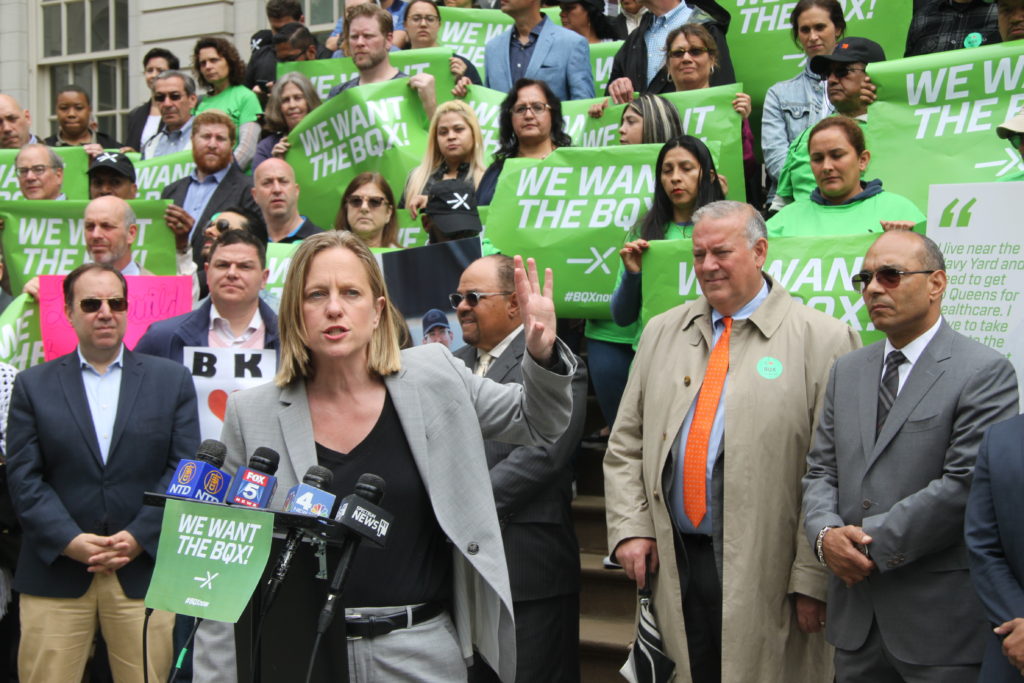
For Claudia Coger, president of the Astoria Houses Residents Association, traveling to other boroughs, including Brooklyn, takes too long and usually requires going through Manhattan. The nearest subway station to her apartment, which is on a peninsula, is 30 blocks away.
“With the BQX, that is most certainly an asset that we need,” she said. “We see it as a plus.”
On the Brooklyn side, business leaders argued that the borough needs better transit. Hector Batista, president and CEO of the Brooklyn Chamber of Commerce, said companies need to be able to transport their employees more efficiently.
Regina Myer, president of the Downtown Brooklyn Partnership, said the area has seen record new employment, but there are still not enough mass transit connections along the waterfront.
“Forward-thinking projects like this are the future,” she said. “We need to think of transit for the 21st century.”
Inside the City Council chambers, the City Council’s Task Force on the BQX, chaired by Brooklyn Councilman Carlos Menchaca, held a public hearing on the project’s origins, costs, status and changes.
Menchaca said the task force was formed to shed light on the planning process for the streetcar.
“I hope there’s an opportunity for everyone to leave here today with the facts of the proposal themselves,” he said.
Seth Myers, executive vice president and director of project implementation for the city’s Economic Development Corporation (EDC), said that despite the addition of Citi Bike and NYC Ferry, there still remains “serious gaps in connectivity” in the bus and subway network.
He testified that the current cost estimate of the project is $2.7 billion, which is $200 million more than the initial price tag.
Approximately half of the capital budget, $1.3 billion, is expected to be generated through value capture.
The city will likely pursue federal funding to make up the rest of the cost, he said.
“We are following all of the requisite processes to make this a qualifying and competitive project,” Myers said.
The environmental review will not only examine impacts and potential mitigations, but also possible alternatives to the project, including Bus Rapid Transit (BRT).
Councilman Antonio Reynoso argued that a Select Bus Service (SBS) system with a dedicated route could provide an alternative that is more short-term, but more cost-effective.
Christopher Hrones, director of strategic transit initiatives with the Department of Transportation (DOT), responded that as part of the technical analysis, a screening of all potential modes is “standard practice.”
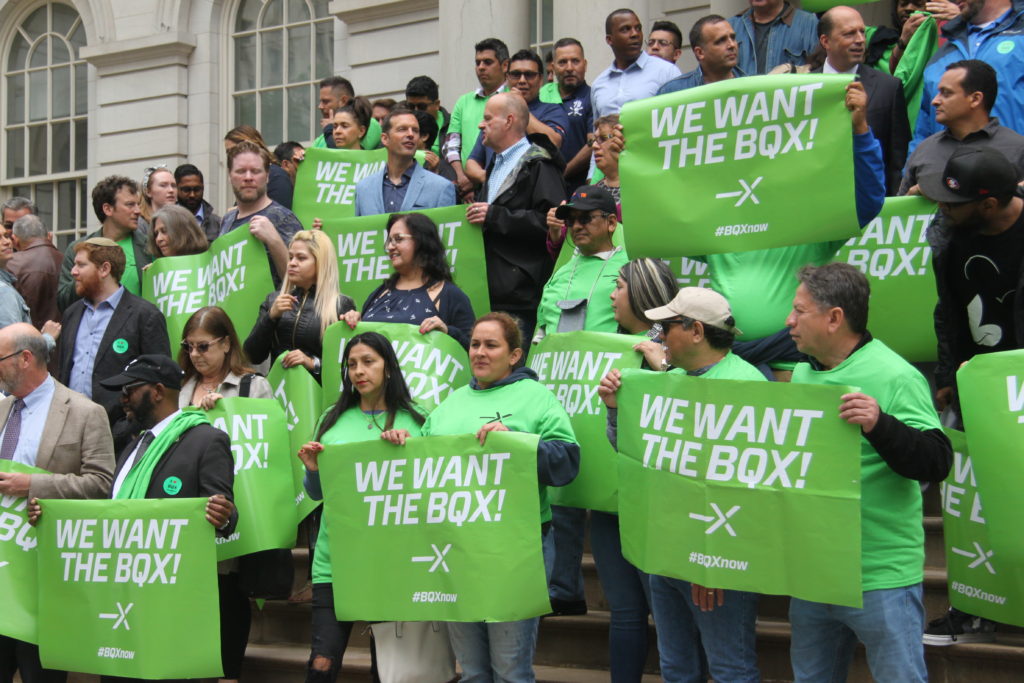
A preliminary study reviewed not just BRT, but also subway expansion and an aerial tram. Hrones admitted that those options were screened out due to cost, but BRT remains a viable alternative.
“It was found that the streetcar was the preferred option,” Hrones said, due to ridership, time savings and ability to generate revenue. “However, a bus rapid transit option was identified as the second-ranking one, and one that was worthy of more exploration.”
During the hearing, Councilman Jimmy Van Bramer questioned the de Blasio administration’s commitment to the project, given that federal funding would be difficult with a hostile federal government.
“How do you anticipate overcoming that barrier if we continue to have a hostile occupant of the White House?” he asked.
“I don’t pretend to be an expert on the Trump administration or Washington D.C.,” Myers responded. “We think we have a lot of merit for the project.”
Elected officials also brought up more local issues at the hearing. Councilman Costa Constantinides said he was concerned about worsening gentrification in his district, particularly along the BQX route.
“Homes are being torn down, there’s a real affordability crisis in this district,” he said. “That will only make the challenges in Astoria even greater.”
He was also concerned about safety along 21st Street, which is a truck route that moves more than 2,000 cars per hour.
Hrones responded that DOT “fully recognizes” the challenges of the thoroughfare, and wants to do more to put in safety measures.
Despite the many questions facing the project, including the funding piece, advocates are hopeful the project will stay on track.
“I’m optimistic this project will get completed,” Schumer said.

